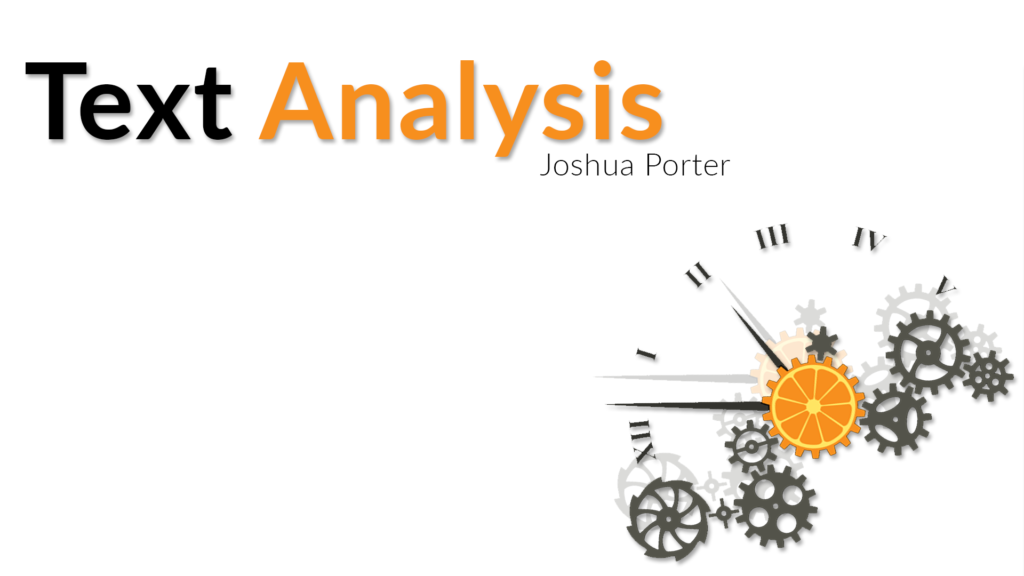Text Analysis
-
Text Analysis
Voyant allows us to compare the frequency of the appearance of specific terms in text, for example time, place, night, morning, and place. For instance below is shown the appearance of time, while all the other terms fit within time it doesn’t mean they necessarily correlate in text. Viewing the data in regards to how often a term shows up allows us to make inferences based on patterns appearing in the text.
The graph below represents the appearance of the term night, showing the ups and downs of the terms appearance. While by itself we can see trends in the usage of a particular word, by adding other similar terms we can compare the usage of those terms. While comparing times of days isn’t necessarily useful to make inferences about the past itself it serves as a control that demonstrates the functionality of Voyant, here we can see how these terms compare and applied to other terms trends will prop up for analysis.
The last graph, the comparison of frequency of use highlights the utility of the tool itself. Comparing all of these terms that fit into one category allows us to establish the appearance of patterns of use. In this case day, night, and morning can show us when things happen, and while that can’t tell us about thoughts and ideas it can establish the patterns of behavior, when things happened and how day, night, and morning played into the lives of those represented in the documents. The more a term appears, the more frequently events described took place during that time. Using place, the only term not related to time establishes a sort of control group, also analyzing patterns of usage but without representing any true correlation with other terms.
-
-
Text Analysis: Microsearch, Links, Knots
By Tyson Luneau & Kristian Price
Microsearch
The microsearch feature can be used to analyze the frequency and distribution of terms within a corpus or a specific text. Red blocks represent the appearance of identified terms within the text, with brighter red indicating a higher relative frequency of the terms. In the 19th century slave narrative corpus, one can determine across texts where particular words appear; words that appear more frequently at the beginning or end of a text may hold some significance as compared with others.
-
-

“How Long is Forever?” Alice asks in Lewis Carroll’s Alice in Wonderland, “Sometimes, just one second” The White Rabbit responds.
-
God and Freedom
Looking through the list of terms the word god stood out to me. This led me to choose my additional words- lord, free, freedom and master. I know only a little about attempts to Christianize slaves and that there were some slaves who adopted the religion of their masters and those that took some aspects of it but made it their own. This is interesting to me and I was curious about whether the texts we are analyzing made any associations between god or religion and freedom. I included master as it was the second most used word and to see how often these other words were used in proportion to that word.
-
Text Analysis: Religion and Slavery
The words chosen for this analysis are as follows: god, christian, slaves, slave, and slavery. They have been chosen for the purpose of studying the correlation between the use of religious terminology with both the mention of the enslaved and the institution of slavery within the documents assigned.
Using Bubblelines to analyze the terms within the documents yields an interesting trend of categories from one time period to the next. The categories are as follows:
1.) Early 1700’s: there is a relatively even amount of mention of religious terminology and slave terminology, but they are discussed separately within the document.
2.) Mid 1700’s: slave and religious terminology are not discussed together
3.) Late 1700’s – Early 1810: there is a relatively even dispersement of religious and slave terminology throughout the documents
4.) 1810-1843: there is more emphasis on one topic over the other, but both are mentioned
5.) Mid 1800’s-1880’s: there is a return to a more even dispersement of the terms
6.) 1890’s: there is more emphasis on slavery, but religious terminology is still used
7.) 1900’s: there is a return to a more even dispersement of the terms
-
Text Analysis
By Clara and Merissa
The five main terms we decided to focus on are “God,” “Master,” “Life,” “Home,” and “Slave.”
We chose the Bubblelines visualization first because it allowed us to easily see the prominence of different terms in each independent work, making it much easier to compare and contrast the use of our selected terms.
-
Who are the great men?
For this assignment, I was curious to see how the six terms “Master”, “Time”, “Slaves”, “People”, “Great”, and “Man” relate to each other in the texts. I’m especially interested in the term “Great”.
-
Text Analysis Assignment
The terms examined in the following discussion of text analysis visualizations include: slaves, master, man, children, people. These particular terms were chosen for analysis in order to explore ways in which the potential humanization of enslaved peoples may (or may not) be found within the corpus of slave narratives.